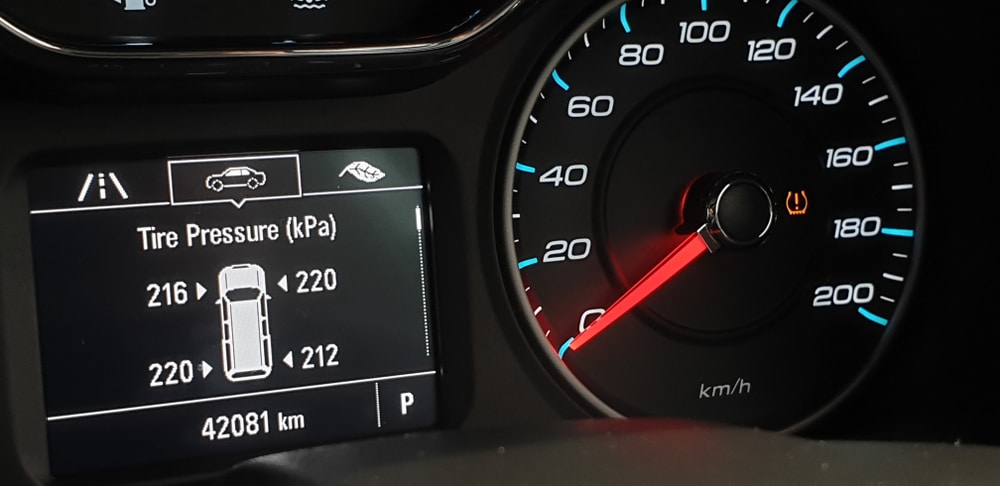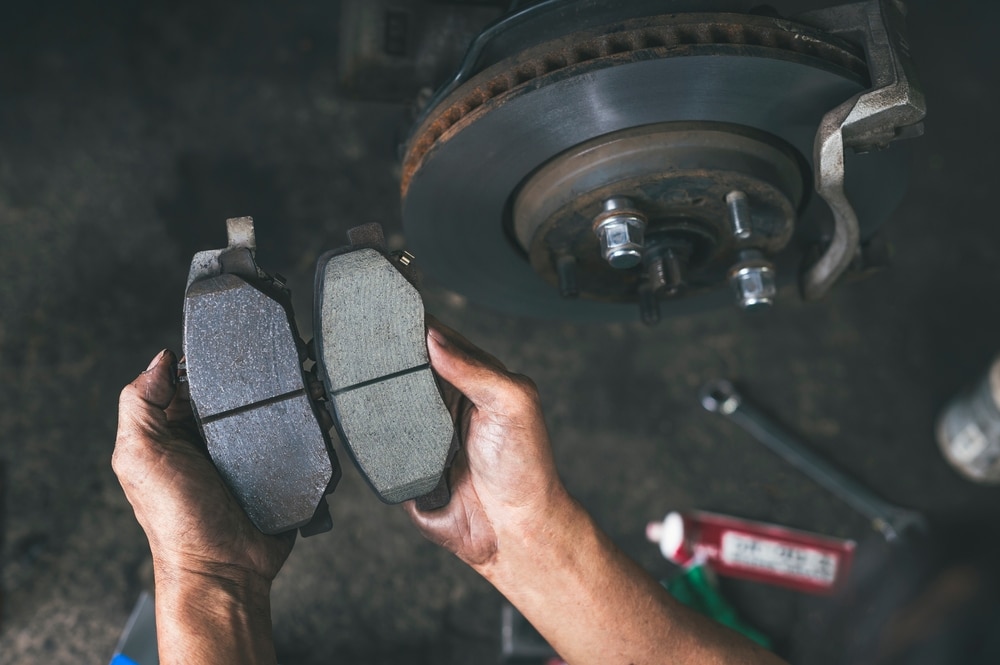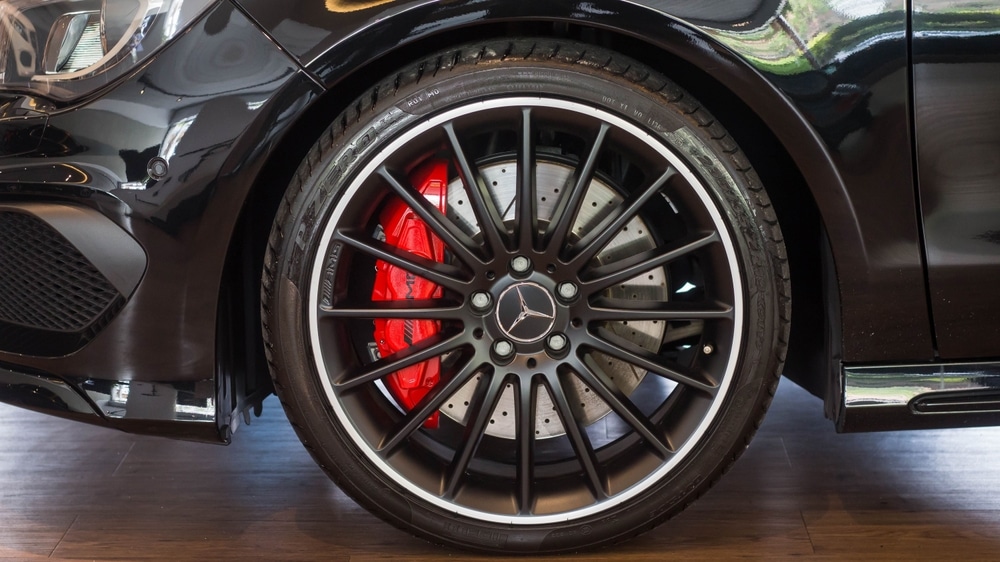Land Rover Tyre Rotation
Your Land Rover’s tyres are the point of contact between your vehicle and the road. That is why it is crucial you stick to your Land Rover maintenance and servicing schedule to ensure your tyres remain in top condition to keep you safe on the road.
Here at Fitch Autos, we recommend having your Land Rover’s tyres rotated – a maintenance procedure that involves moving the tyres from one position on the vehicle to another. For example, the front left tyre may be moved to the front right position, and so on.
The purpose of Land Rover tyre rotation is to achieve even wear across all four tyres. By changing the tyre positions, you ensure that each tyre experiences different wear patterns and shares the workload more evenly. This helps to prevent uneven wear and extends the overall lifespan of the tyres, promoting better tyre performance, improved handling, and increased safety on the road.
In this blog post, we will talk about why Land Rover tyre rotation is important, we look at the signs your tyres need rotating, and explain how to rotate your tyres.
So let’s get started…

Tyre Rotation and Why it is Important
Tyre rotation involves moving the tyres of your Land Rover from one position to another. This can include swapping the front and rear tyres or changing their positions from one side of the vehicle to the other.
The reason for tyre rotation is to address the uneven wear that can occur due to factors like weight distribution and the drivetrain. Typically, the front Land Rover tyres wear out faster due to the heavier weight at the front of the vehicle. By rotating the tyres, you can help distribute the wear more evenly and prevent specific tyres from wearing out faster than the others.
Here are a just few reasons reasons why Land Rover tyre rotation is important:
- Improves performance: When tyres wear unevenly, it can cause an imbalance in the vehicle’s handling, resulting in steering problems such as pulling to one side, vibrations, or an overall unstable driving experience. Regularly rotated tyres will mean a more even tyre wear so you can avoid these handling and steering issues.
- Prevents blowouts: Uneven tyre wear increases the risk of tyre blowouts, which can cause accidents. Regular tyre rotation can help avoid uneven wear to reduce this risk. Proper Land Rover tyre maintenance, including rotation, alignment checks, and monitoring tyre pressure, enhances road safety.
- Maintains traction: Worn-down tyres lose their tread depth which could lead to you driving illegally without even knowing it! A loss of tread depth can impact your ability to control your Land Rover, putting your safety in danger.
- Maximises efficiency: Tyre rotation indirectly helps maximise fuel efficiency by promoting even wear, improving vehicle balance, and reducing rolling resistance. This can contribute to better fuel economy along with other factors like proper tyre inflation and driving habits.
For a complete Land Rover service, call our friendly team at Fitch Autos today and book an appointment.
What Are the Signs That My Land Rover Requires Tyre Rotation?
There are several signs that indicate your Land Rover may require tyre rotation:
- Uneven Tread Wear: Check your tyres for uneven wear patterns. If you notice that certain tyres have significantly more wear on one side or in specific areas, it may be time for rotation.
- Vehicle Pulling: If you feel your Land Rover pulling to one side while driving on a straight road, it could be an indication of uneven tyre wear. Tyre rotation can help address this issue.
- Vibrations: Excessive vibrations, especially at higher speeds, can be a sign of unevenly worn tyres. Rotating the tyres can help restore balance and reduce vibrations.
- Increased Road Noise: If you notice an increase in tyre noise, it could be due to uneven wear. Tyre rotation can help distribute the wear and reduce noise levels.
- Irregular Tyre Pressure: If you consistently find that certain tyres have significantly different pressure levels compared to others, it may indicate uneven wear. Tyre rotation can help address this issue.
- Recommended Maintenance Schedule: We recommend you follow the manufacturer’s guidelines for tyre rotation intervals. Check your Land Rover’s owner’s manual or consult our qualified technicians here at Shire Garage to determine the recommended service schedule for your specific model.
Regular tyre rotation is a Land Rover maintenance practice that can help prevent uneven wear, extend tyre life, and promote optimal performance and safety. If you notice any of these signs, it is advisable to schedule a tyre rotation service and alignment check to maintain the health and longevity of your Land Rover’s tyres.
What are the Benefits of Rotating My Land Rover Tyres?
When the tyres on your Land Rover are rotated to schedule, you will benefit from the following.
- Improved tyre lifespan: By rotating your tyres, you will help to ensure that wear is distributed equally across all four tyres, in turn extending their lifespan.
- Better performance: By ensuring that all four tyres wear evenly, you will benefit from better performance and an improved driving experience.
- Staying legal on the road: Uneven tyre wear can lead to your Land Rover tyres falling below the legal minimum tread depth. You could be fined or get points on your licence.
- Fuel Efficiency: Balanced wear helps maintain optimal fuel economy by reducing rolling resistance.
- Cost Savings: By prolonging tyre life, you save money on premature replacements.
- Enhanced Safety: Evenly worn tyres provide better grip and stability, increasing road safety.
With all these benefits, why not let our specialists at Fitch Autos take care of your Land Rover tyre rotation needs today.
The Land Rover Tyre Pressure Monitoring System (TPMS)
The Land Rover Tyre Pressure Monitoring System (TPMS) is an advanced feature designed to continuously monitor the air pressure in your vehicle’s tyres. It uses integrated sensors on the valve stems of each tyre to provide real-time pressure information.
With the TPMS in place, you’ll receive alerts if any of your tyres have low pressure or if there’s a significant pressure difference between them. This is indicated through a warning light on your dashboard. Some Land Rover models may also display the individual tyre pressures digitally.
By promptly notifying you of low tyre pressure, the TPMS enables you to take necessary action to address the issue. One possible step is to rotate your tyres, which helps equalise pressure and promote even wear. Both the TPMS and regular tyre rotation contribute to maintaining tyre health and extending the tyre’s lifespan.
If you encounter any TPMS-related concerns, our team at Fitch Autos is here to assist you. Our knowledgeable Land Rover technicians will ensure your tyre sensors are functioning properly and your tyres are at the correct pressure. Contact us today to schedule an appointment. We’re dedicated to meeting all your Land Rover tyre needs.

What is the Land Rover Recommended Tyre Interval for My Vehicle?
The recommended tyre rotation interval is every 10,000km / 6,000 miles or as part of your regular service schedule. However, there are additional factors to consider that may require your Land Rover tyres to be rotated more often.
If you drive at high speeds, carry heavy loads, drive long distances or drive off-road, you may require your tyres to be rotated more often due to the extra strain upon your tyres.
If you are unsure of when to rotate your tyres due to your driving habits or simply because you don’t remember when they were last rotated, then we can help. Fitch Autos can check your Land Rover tyre rotation as part of your regular service and maintenance schedule.
Don’t let Land Rover tyre wear ruin your driving experience. Give us a call today for your Land Rover maintenance service.
DIY or Professional: Can I Rotate the Tyres Myself?
If you already know how to change a spare tyre, then you are part of the way there and you could try and rotate the tyres yourself. However, for safety reasons, we will always recommend that you get a reputable garage, such as Fitch Autos to handle this for you.
Should you want to attempt to rotate the tyres yourself, then you can follow our guide below:
- Find a suitable location: Ensure you have enough space to safely perform the tyre rotation. A flat and level surface is ideal.
- Gather necessary tools: You will need a wheel brace or a suitable tool to loosen and tighten the wheel nuts, a jack to lift the vehicle, and jack stands to support the vehicle while the tyres are off.
- Loosen the wheel nuts: Before lifting the vehicle, use the wheel brace to loosen the wheel nuts on all four tyres. Loosen them enough to make removal easier later.
- Lift the vehicle: Locate the recommended jacking points on your Land Rover. Use the jack to lift one corner of the vehicle at a time. Refer to your owner’s manual for specific instructions on proper jacking points and lifting procedures.
- Place jack stands: Once the vehicle is lifted, securely position jack stands under the vehicle’s frame or designated support points. This provides stable support while the tyres are being rotated. Make sure the jack stands are set at the correct height and are placed on a solid surface.
- Remove and reposition the tyres: With the vehicle safely supported by the jack stands, remove each tyre one at a time. Follow the recommended rotation pattern for your Land Rover, which can usually be found in the owner’s manual. Common rotation patterns include moving the front tyres to the rear and vice versa or crossing the tyres diagonally.
- Install the tyres: Place the tyres in their new positions according to the rotation pattern. Carefully align the wheel studs with the tyre holes and hand-tighten the wheel nuts.
- Lower the vehicle: Use the jack to lower the Land Rover until the tyres contact the ground. Remove the jack stands and fully tighten the wheel nuts using the wheel brace.
- Repeat for other tyres: Repeat the process for the remaining tyres, lifting the vehicle, placing jack stands, removing and repositioning the tyres, and then lowering the vehicle.
- Verify tightness: Double-check that all wheel nuts are properly tightened to the recommended torque specifications.
It’s important to note that specific Land Rover models may have unique procedures or recommendations for tyre rotation, so consulting the owner’s manual is always advisable. For example, the Land Rover Defender often features larger tyres at the rear compared to the front. You should not attempt to rotate the front and rear tyres if this is the case.
If you are uncertain or uncomfortable performing the tyre rotation yourself, it’s best to seek professional assistance from a qualified technician so call our team of Land Rover experts at Fitch Autos. Not only will you save on time and stress, but you will also always get a guaranteed high-quality fix ensuring your safety on the road. Contact us today.
In Summary
Tyre rotation is an important part of your Land Rover maintenance, but it is often overlooked. When you don’t rotate your tyres, your Land Rover tyre wear may be uneven, which can lead to an increase in fuel economy, additional strain on your suspension, difficulty when steering and braking, and you could even end up driving with an illegal tread depth.
When you rotate your tyres regularly, you will ensure that your safety isn’t compromised due to uneven wear. You’ll also benefit from a better driving experience and a greater tyre lifespan. What’s not to love about that?!
At Fitch Autos, we have a team of Land Rover maintenance specialists ready to assist you with your regular Land Rover maintenance. Although you could attempt to do this tricky task yourself, it’s best to have an expert complete this to ensure it’s done correctly and safely the first time.
Give us a call today on 01543 401252 for your Land Rover tyre rotation and alignment.
Call Now 01543 401252Save on Land Rover Servicing

